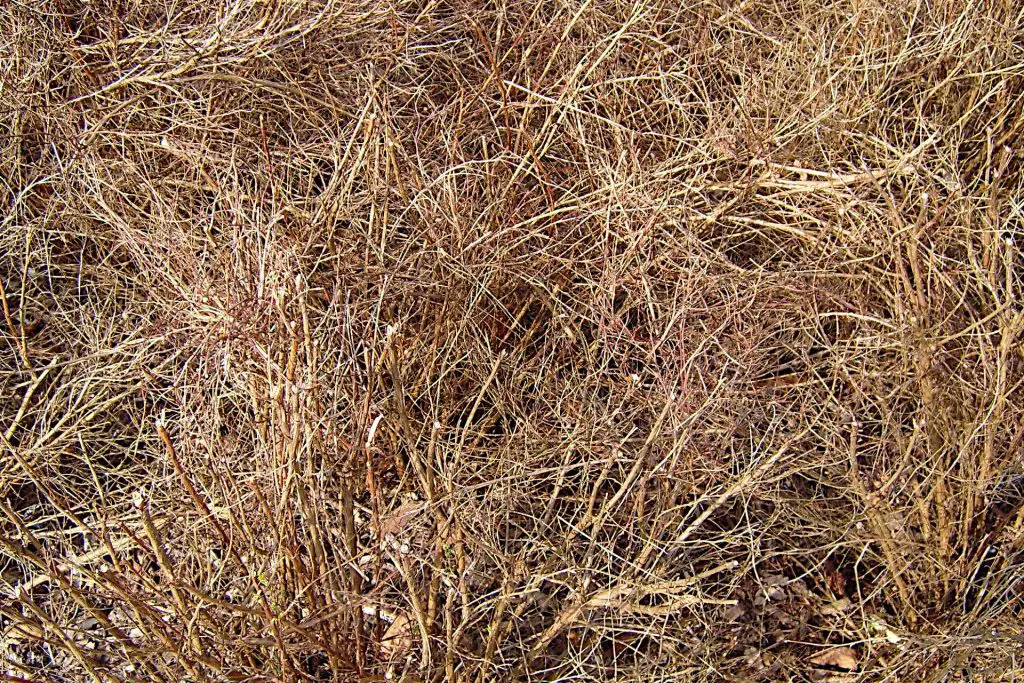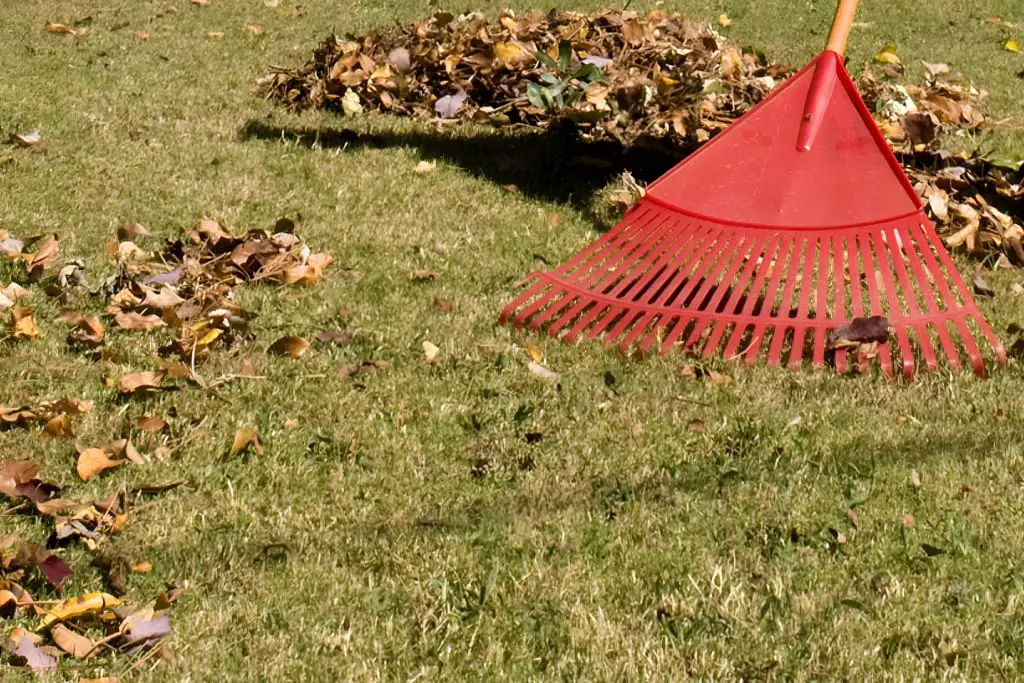Should You Rake Dead Grass From Your Lawn?
There are several problems that might arise if your lawn has areas of brown grass or thatch that are too large. Without your attention, the soil will suffer from a lack of water, sunshine, and nutrients. Dead grass can be removed by mowing, shoveling, raking, and brushing, but are these practices effective?
Dead grass should be raked away to allow the soil to breathe and get the nutrients it needs. A lack of nutrients in the soil might be exacerbated by an overabundance of dead grass. You may prevent fresh grass roots from being pulled out of the ground by raking the dead grass slowly. Rakes for thatching are perfect.
It is important that you rake dead grass as it can encourage new growth by exposing the soil to sun, water, and nutrients. This in turn helps the soil retain moisture. It also helps to thin any covering of thatch, which clears the way for fresh grass seeds, roots, and other elements. However, you need to show caution if the dead grass has been caused by fungi in order not to spread spores.
Do You Need to Rake Dead Grass?

In the early spring, many homeowners spend time raking their lawn to get rid of the dead grass and thatch preparing the lawn for new growth.
Thatch is a layer of dead grass and stems that builds up over time and can stop sunlight from penetrating the soil. This can prevent water from soaking through to the soil and can also prevent oxygen and nutrients from reaching the soil.
If your lawn has a thick layer of thatch, it may be necessary to rake it away to allow the soil to breathe and for water to soak through. However, if your lawn is healthy and there is only a small amount of thatch, you may be able to leave it alone.
Raking your lawn can also help aerate the soil, which allows oxygen and nutrients to reach the soil.
You should rake dead grass for the following reasons:
- Dead grass can prevent fresh grass roots from getting the nutrients they need.
- An overabundance of dead grass can block sunlight and air from getting to the soil.
- Dead grass can harbor harmful pests and diseases that can damage your lawn.
- Raking dead grass helps to improve the overall appearance of your lawn.
- Raking also helps to aerate the soil and promote new growth.
Air Flow and Lawn Diseases
One of the most important things you can do for your lawn is to provide good airflow. Poor airflow can cause a number of problems, including fungal diseases. Fungal diseases thrive in moist environments, and without good airflow, the moisture will remain on your lawn, allowing the fungi to grow and spread.
Lack of circulation can also lead to brown patch and Pythium blight. Brown patch is a fungus that causes circular patches of dead grass to form on your lawn. Pythium blight is a water mold that causes the leaves of your plants to wilt and die. Both of these diseases can be prevented by providing good airflow to your lawn.
Dollar spot is another fungal disease that can be caused by a lack of air circulation. Dollar spot is a circular patch of dead grass that typically appears in the spring or fall.
Identify the Cause of The Dead Grass
In order to identify the cause of the dead grass, it is important to first understand what could have caused it. There are many potential causes, such as lack of water, pests or diseases, or even an unsuitable soil type and cause may effect the way that you rake or deal with the problem.
Generally, cultural issues are more often the cause. For example, compacted soil from excessive foot traffic or too much use of a lawn mower can prevent the grass from getting the nutrients and water it needs to thrive.
Another issue that can cause dead grass is scalping the lawn, or cutting it too short. This exposes the roots to the hot sun and dries them out. To avoid these problems, make sure to give your lawn plenty of room to grow and only cut it short enough so that the blades are still green.
Once the cause has been identified, steps can be taken to address the issue and hopefully bring the grass back to life.
Make Sure it’s Dead – Is the Grass Really Dead?
It is quite possible that although the grass blade may appear brown or have yellowed down to the soil surface that the grass could well still be alive. There are several ways in which you can check:
Here’s how to make sure the grass is really dead:
- Check for signs of life. If there are any green patches or blades of grass poking up, then the grass is still alive.
- Feel the soil beneath the dead grass. If it’s moist or damp, then there’s a chance that the roots are still alive and growing.
- Cut a small section of the dead grass with a sharp knife or garden tool. If the grass is still alive, the cut section will be green and moist. If the grass is truly dead, the cut section will be dry and brown.
- Pull up the dead grass by the roots. If the grass comes up easily and the roots are dry and brittle, then the grass is definitely dead. If the roots are still moist and pliable, then the grass is still alive
Reviving Dead Grass
Your ability to be able to revive dead grass will depend on the causes of the problem.
If the grass is dying due to lack of water, you can water it deeply once a week until it recovers. If the problem is that the soil is too acidic, you can add lime to the soil to make it more alkaline. If there is too much salt in the soil, you can flush the soil with clean water to remove the salt. If the grass is dying due to a lack of nutrients, then you may be able to revive it by fertilizing it.
If, however, the grass has been killed by pests or diseases, you may be able to treat it with a fungicide. However, you may need to take more drastic measures and remove all of the dead grass, then overseeding the area or replace it with new sod.
What Type of Rake Do You Use to Remove Dead Grass

A rake is a versatile tool and is essential to the armory of any proper lawn care equipment. It can be used for various purposes, including loosening, lifting, and turning over soil, removing weeds and debris, aerating lawns, thatching lawns, sweeping leaves, and other garden debris.
There are a number of different types of rakes available on the market. The two of the most popular types are the leaf rake and the lawn rake.
The leaf rake has tines that are curved inward and is good for removing leaves, acorns, and other debris from your lawn. The lawn rake has tines that are straight and is good for removing dead grass, moss, and other debris from your lawn.
Another type of rake that is excellent at removing dead grass from your lawn, you would use a thatching rake. Thatching rakes have a unique shape that makes them ideal for removing thatch from the area surrounding grass roots. This type of rake has sharp teeth that can cut through the dead grass and loosen it so it can be removed easily.
Why You Should Be Cautious When You Rake Dead Grass

As we have seen there are a lot of good reasons for raking away dead grass. However, there are also dangers involved too. Raking leaves and grass that have died back can contain harmful bacteria that can contaminate soil and water. Not only can this be dangerous to your plants, but it could also lead to the spread of pests and diseases.
One way to try and mitigate any spread of fungi is to cordon off the affected area. Once done you should rake gently from the edge to the center. It is important to try to be as gentle as feasible because the raking action could send fungi spores and pathogens airborne and spread the infection.
Why Grass Clippings Are Good for Your Lawn
Grass clippings are often considered to be one of the lawn’s worst enemies, but they’re actually one of the best things you can do for your lawn. Here’s why:
- Adding grass clippings returns nitrogen to the soil, which is essential for healthy lawn growth.
- Grass clippings help to keep the soil moist, which is important in preventing drought-related brown patches.
- Grass clippings provide a protective layer over the soil, which helps to keep it cool and reduce evaporation.
- Spreading grass clippings act as a natural mulch, which helps to suppress weed growth.
Summary: Should You Rake Dead Grass From Your Lawn?
As we have discussed there good reasons as to why you should rake dead grass from your lawn as it allows the underlying soil to access water, nutrients, and sunshine more easily.
Raking can also help distribute fertilizer and other plant-related materials evenly throughout the lawn, which can help improve growth and overall condition. It is important though to understand why the grass has died in the first place and rake accordingly to avoid spreading any pathogens present.
Ultimately raking away thatch and dead grass should be part of your lawn care maintenance program which will contribute to ensuring healthy grass and a beautiful lawn.
